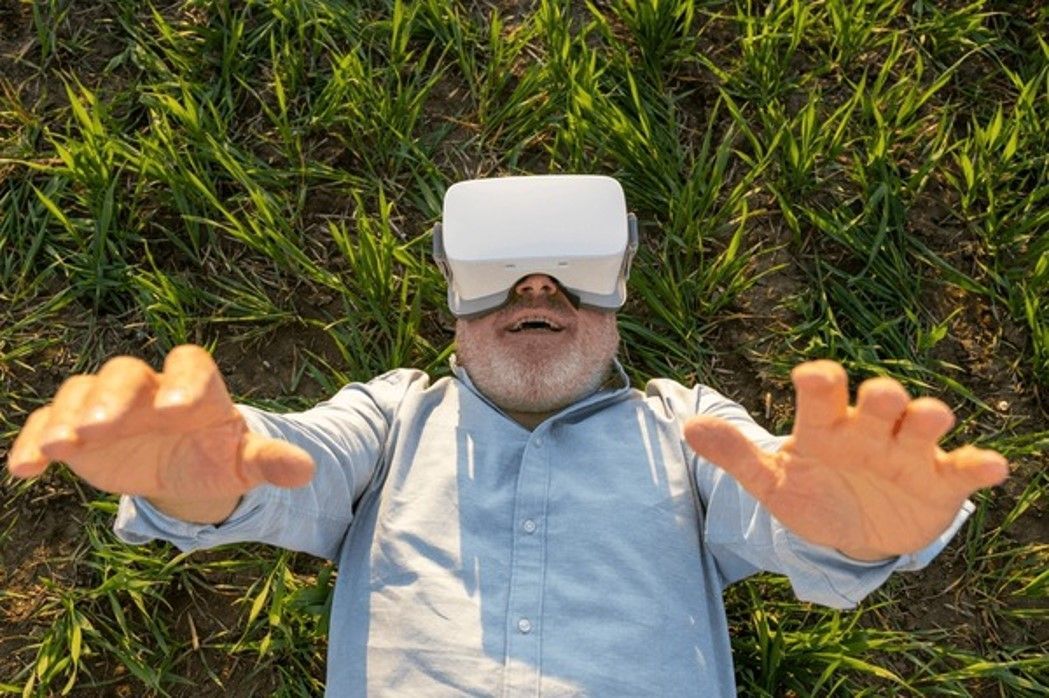As the population ages, the demand for effective senior care is becoming increasingly critical. This blog explores the latest innovations transforming assisted living and memory care, focusing on how technology is improving the quality of life for seniors. From smart home devices that enhance safety and autonomy to specialized memory care programs that utilize virtual reality for cognitive rehabilitation, we'll delve into the methods of redefining support for elderly individuals.
By highlighting success stories, new research, and practical tips for families, this blog aims to inform and inspire a future where senior care is not only compassionate but also cutting-edge and personalized. Join us as we navigate these advancements and understand their profound impact on the aging population.
Smart Home Technology: Enhancing Safety and Independence

As technology continues to evolve, smart home devices are becoming invaluable tools for seniors, helping them maintain their independence while ensuring their safety. These devices range from smart locks and security cameras to automated lighting and voice-activated assistants, all designed to create a more secure living environment.
1. Home Security Systems
Advanced security systems are essential for peace of mind, especially for seniors living alone. Modern smart home security solutions can include motion sensors, doorbell cameras, and alarm notifications sent directly to family members or caregivers. These features not only deter potential intruders but also enable rapid response in emergencies.
2. Automated Lighting and Climate Control
Automated lighting can significantly enhance safety by ensuring that seniors never have to navigate dark spaces, reducing the risk of falls. Similarly, smart thermostats allow for easy temperature control, promoting comfort without the need to manually adjust settings, which can be particularly beneficial for those with mobility challenges.
3. Voice-Activated Assistants
Voice-activated virtual assistants, such as Amazon's Alexa or Google Home, provide a seamless method for seniors to interact with their smart home systems. With simple voice commands, they can control lighting, play music, set reminders for medications, or even make phone calls, all of which foster a sense of independence and connectivity.
4. Fall Detection Sensors
Fall detection technology is another critical component of smart home systems. Wearable devices or installed sensors can detect falls and automatically alert emergency contacts or services, ensuring timely assistance. This safety net can empower seniors to live more confidently in their homes.
By integrating these smart home technologies, seniors can enjoy an enhanced quality of life that prioritizes their safety and independence, while also providing peace of mind for their families.
Virtual Reality: Revolutionizing Memory Care Programs
Virtual reality (VR) is emerging as a transformative tool in memory care, offering innovative ways to engage seniors with cognitive impairments. By immersing individuals in interactive experiences, VR has the potential to enhance memory recall, reduce anxiety, and foster social connections among participants.
1. Immersive Cognitive Rehabilitation
VR applications designed for cognitive rehabilitation allow seniors to engage in activities that stimulate memory and cognitive function. These programs often replicate familiar environments or scenarios from the past, encouraging reminiscence and promoting brain activity. Research shows that such immersive experiences can support cognitive rehabilitation by helping seniors re-establish connections to their fond memories and life stories.
2. Reducing Anxiety Through Familiar Environments
For seniors experiencing anxiety or confusion, virtual reality can provide a calming escape. By simulating serene and familiar environments—such as beaches, gardens, or even their hometowns—VR can create a soothing atmosphere that alleviates feelings of distress. This therapeutic approach has shown promising results in reducing anxiety and improving overall well-being among seniors in memory care programs.
3. Enhancing Social Interaction
Social isolation is a common challenge faced by seniors, particularly those with memory disorders. VR can bridge this gap by enabling virtual social interactions in shared experiences, allowing residents to connect in meaningful ways. VR platforms can facilitate group activities, such as guided tours or shared games, fostering camaraderie among participants and encouraging socialization that might otherwise be challenging.
4. Tailored Experiences for Individual Needs
One of the key advantages of virtual reality in memory care is the ability to customize experiences based on individual preferences and cognitive capabilities. Care providers can tailor VR sessions to meet the specific interests and needs of each senior, ensuring that therapy remains engaging and effective. By personalizing these immersive experiences, memory care programs can significantly enhance their impact and effectiveness.
Incorporating virtual reality into memory care represents a groundbreaking step forward in enhancing the lives of seniors with cognitive impairments. As technology continues to advance, the potential for VR to improve quality of life and promote cognitive engagement in memory care settings becomes more profound.
Wearable Devices: Monitoring Health and Well-Being
Wearable devices are increasingly playing a pivotal role in promoting health and well-being among seniors. These innovative gadgets not only track vital health metrics but also enhance communication between seniors and their healthcare providers.
1. Health Monitoring and Data Collection
Wearable devices, such as smartwatches and fitness trackers, allow seniors to monitor important health metrics, including heart rate, blood pressure, and activity levels. Continuous data collection helps individuals and their caregivers remain informed about health trends, enabling timely interventions when necessary.
2. Medication Reminders
Many wearables integrate features that remind seniors to take their medications on time. By sending alerts directly to the device, these reminders can help prevent missed doses, ensuring that medication regimens are followed and contributing to better health outcomes.
3. Emergency Assistance Features
In the event of a health emergency, wearable devices often come equipped with emergency assistance features like SOS buttons or automatic emergency calls. This functionality provides seniors with peace of mind, knowing they can quickly seek help if needed, which is especially crucial for those living alone.
4. Promoting an Active Lifestyle
Wearables encourage seniors to stay active by tracking their daily activities and setting fitness goals. Whether it’s walking, cycling, or engaging in light exercises, these devices can motivate seniors to maintain an active lifestyle, contributing to overall physical and mental well-being.
Incorporating wearable devices into daily routines empowers seniors to take charge of their health. These tools not only provide crucial information but also foster a sense of independence and confidence in managing their well-being.
Robotics in Senior Care: Providing Assistance and Companionship
Robotics technology is increasingly being integrated into senior care, offering innovative solutions that address the unique needs of elderly individuals. These robotic systems can assist with daily tasks, provide companionship, and enhance seniors' overall quality of life.
1. Assisting with Daily Activities
Robotic assistants can help seniors with various daily activities, from meal preparation to household chores. Robots equipped with smart home connectivity can automate tasks, such as adjusting lighting or controlling appliances, making it easier for seniors to manage their living environments. By facilitating these activities, robotics can enhance independence, allowing seniors to live comfortably in their homes.
2. Companionship and Emotional Support
Social robots designed for companionship can alleviate feelings of loneliness and isolation in seniors. These robots can engage in conversations, play games, and even provide reminders for social events or family interactions. By fostering emotional connections, these robotic companions can contribute significantly to mental well-being and help reduce feelings of depression commonly associated with aging.
3. Monitoring and Safety
Robotic systems can also function as monitoring devices, ensuring the safety of seniors living alone. Robots equipped with cameras and sensors can detect falls or unusual behavior, automatically alerting caregivers or family members. This proactive approach to safety ensures timely intervention during emergencies, providing both seniors and their families with peace of mind.
4. Enhancing Social Interaction
Robotics can enhance social interactions not only between seniors and machines but also among individuals. Some robotic systems are designed to facilitate group activities or interactive sessions, bringing together seniors to engage in shared experiences. By encouraging socialization through robotics, these technologies can help build community connections and support networks.
The integration of robotics into senior care represents a promising frontier that addresses the challenges of aging. As technology evolves, the potential for robots to improve the lives of seniors by providing assistance and companionship continues to grow, transforming traditional caregiving models.
Telemedicine: Expanding Access to Healthcare for Seniors
Telemedicine is revolutionizing the way healthcare is delivered to seniors, breaking down barriers to access and enhancing convenience for patients and providers. This approach empowers elderly individuals to receive care from the comfort of their homes, ensuring that they can maintain their health and well-being even when mobility challenges arise.
1. Convenient Access to Healthcare Services
Telemedicine facilitates easier access to healthcare services, allowing seniors to consult with their healthcare providers without the need for physical travel. This is particularly advantageous for those with limited transportation options or chronic conditions that make in-person visits cumbersome. Telehealth platforms enable virtual consultations, ensuring that seniors receive timely care for non-emergency medical conditions.
2. Continuity of Care
Telemedicine supports the continuity of care by enabling consistent communication between seniors and their healthcare teams. Regular virtual appointments can help monitor chronic diseases, adjust treatment plans, and ensure adherence to prescribed medications. This ongoing relationship can lead to better health outcomes and enhanced quality of life, as seniors feel more connected to their caregivers.
3. Reduced Healthcare Costs
By minimizing the need for in-person visits, telemedicine can lower healthcare costs for seniors. It can reduce expenses related to travel, missed work for caregivers, and potential hospital visits, thereby easing the financial burden associated with traditional healthcare. Telehealth services often have lower copays than in-person visits, making them a more affordable option for many seniors.
4. Combatting Isolation
Telemedicine also plays a critical role in combating feelings of isolation among seniors. Virtual health visits provide an opportunity for meaningful interaction with healthcare providers, fostering social connections that can enhance mental well-being. The ability to chat with familiar providers can alleviate loneliness, especially for those who spend significant time at home.
The rise of telemedicine represents a crucial advancement in healthcare for older adults, addressing key issues of accessibility, cost, and emotional support. By leveraging technology, seniors can receive comprehensive care that caters to their unique needs, ultimately improving their overall health and quality of life.
Personalized Care Plans: Tailoring Services to Individual Needs

Personalized care plans are essential in addressing the diverse and unique requirements of older adults. By focusing on individual preferences, medical histories, and lifestyle factors, these plans aim to provide tailored services that enhance the quality of care and the overall well-being of seniors.
1. Understanding Individual Preferences
Creating an effective personalized care plan begins with understanding the individual's preferences and values. This includes taking into account their specific needs, interests, and daily routines. Engaging seniors in the planning process empowers them to participate actively in their care, fostering a sense of autonomy and respect.
2. Comprehensive Assessment
A thorough assessment is crucial for developing personalized care plans. Healthcare professionals should evaluate not only the medical conditions of seniors but also their mental, emotional, and social health. This holistic approach ensures that all aspects of well-being are considered, leading to more comprehensive and effective care solutions.
3. Flexibility and Adaptability
Personalized care plans must be flexible and adaptable to accommodate changes in a senior’s health status or personal circumstances. Regular reviews and updates to the care plan allow for modifications based on evolving needs, ensuring that the care provided remains relevant and effective.
4. Coordination of Services
To maximize the benefits of personalized care plans, effective coordination among various healthcare providers is essential. This can involve collaboration between primary care physicians, specialists, therapists, and caregivers, ensuring that all are aligned in delivering consistent and cohesive care tailored to the individual.
5. Monitoring and Evaluation
Ongoing monitoring and evaluation of the care plan are vital to assess its effectiveness and make necessary adjustments. Measuring care outcomes and gathering feedback from seniors and their families can highlight areas for improvement, ensuring that the personalized approach continues to meet their evolving needs.
The implementation of personalized care plans not only improves the quality of care for seniors but also promotes a greater sense of dignity and respect, ultimately leading to better health outcomes and a higher quality of life.
Cognitive Rehabilitation: Innovative Techniques for Memory Support
Cognitive rehabilitation has emerged as a vital approach to supporting memory function among seniors, particularly those experiencing cognitive decline. By focusing on enhancing cognitive skills and compensating for memory challenges, various innovative techniques are being used to foster cognitive health.
1. Reminiscence Therapy
Reminiscence therapy involves encouraging seniors to recall and share past experiences, which not only stimulates memory but also promotes social interaction. This technique often employs photographs, music, and familiar objects to trigger memories, allowing individuals to connect with their past and engage in meaningful conversations.
2. Memory Training Programs
Structured memory training programs are designed to help seniors develop strategies to improve their memory skills. These programs may include exercises that target specific cognitive functions such as attention, recall, and problem-solving. By practicing these skills regularly, participants can increase their cognitive resilience and confidence in their memory abilities.
3. Technology-Assisted Interventions
Advancements in technology have opened new doors for cognitive rehabilitation. Applications and devices designed for memory assistance, such as reminder systems, cognitive games, and virtual reality experiences, can provide engaging ways for seniors to enhance their cognitive abilities and manage tasks effectively.
4. Structured Routine and Environmental Modifications
Establishing a structured daily routine can significantly benefit cognitive function. Consistent schedules help seniors to better consolidate their memory by providing predictability and reducing cognitive load. Additionally, making environmental modifications—such as decluttering living spaces and using visual cues—can help seniors navigate their surroundings more easily and support memory recall.

5. Social Engagement and Cognitive Challenges
Encouraging social engagement through group activities or cognitive challenges can stimulate mental processes and memory function. Activities like puzzles, games, or book clubs promote interaction and keep the mind active while also reducing feelings of isolation.
Incorporating these innovative techniques into the lives of seniors can enhance their cognitive health and quality of life, making cognitive rehabilitation an essential aspect of comprehensive care for aging individuals.
Contact Our Care Concierge Today!
If you or a loved one are seeking personalized support and innovative care solutions for aging individuals, we invite you to reach out to the Care Concierge of New England. Our dedicated team is here to help you navigate the complexities of senior care, ensuring that your unique needs are met with compassion and expertise. Contact us today to learn more about how we can assist you in enhancing the quality of life and well-being of seniors in your life. Don’t wait—get in touch and take the first step towards tailored care solutions!


